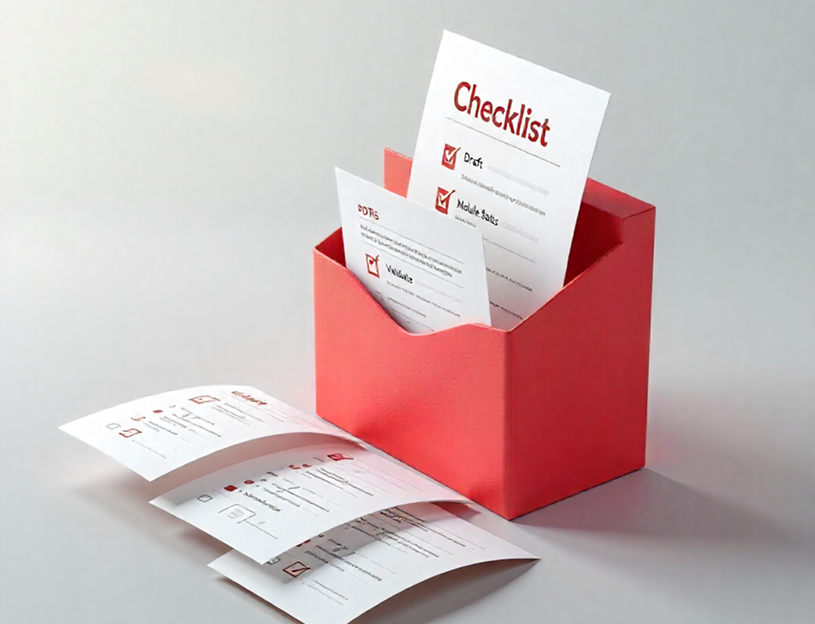
Regulatory submissions in the pharmaceutical and biotechnology industries play a crucial role in getting drugs and medical products to market. One of the most widely accepted standards for submitting regulatory documentation is the electronic Common Technical Document (eCTD). This globally recognized format simplifies submissions to regulatory bodies and improves the efficiency of review processes. If you're new to the topic and wondering what eCTD is, this article will walk you through the basics and explain its relevance, especially in the context of regulatory submissions and beyond.
What is eCTD?
The eCTD, or electronic common technical document, is a globally recognized format used for the electronic submission of applications, amendments, and reports to regulatory bodies like the FDA, EMA, and MHRA. It was developed by the International Council for Harmonisation (ICH) to streamline the regulatory submission process by replacing the older, paper-based Common Technical Document (CTD).
Key Components of an eCTD Submission
An eCTD submission consists of five main modules organized in a standard XML structure:
- Module 1 – Administrative Information (Region Specific)
- Module 2 – Overview & Summaries
- Module 3 – Quality Documentation (e.g., manufacturing, control)
- Module 4 – Nonclinical Study Reports
- Module 5 – Clinical Study Reports
Each module supports structured content management, making regulatory review more efficient and traceable.
Importance of eCTD in Regulatory Submissions
The importance of eCTD in regulatory submissions lies in its ability to improve accuracy, reduce time to market, and comply with international standards. Agencies can process applications faster and with fewer errors, ensuring better alignment with global regulatory requirements. For companies targeting multiple markets, the eCTD format ensures consistency and interoperability.
Benefits of Using eCTD Over Traditional Paper Formats
Transitioning from paper-based submissions to the Electronic Common Technical Document (eCTD) format provides numerous operational and regulatory advantages:
- Streamlined Submissions: Compile, organise, and submit regulatory content in a standardized, structured format.
- Enhanced Compliance: Meet regional requirements from authorities like the FDA, EMA, and MHRA using globally accepted standards.
- Automated Workflows: Streamline repetitive submission tasks with automation to boost efficiency and accuracy.
- Customizable Templates: Leverage flexible templates tailored to your submission type and regional authority, improving consistency and speed.
- 24/7 Support: Receive round-the-clock expert support to address technical or regulatory issues whenever they arise.
- Cost and Time Savings: Eliminate the logistical burden of printing, shipping, and physical archiving, while accelerating submission timelines.
- Data Security and Integrity: Secure digital storage and access controls reduce the risk of data loss or unauthorized changes.
- User-Friendly Tools: Platforms like eCTDPlus offer intuitive interfaces and guidance, even for those new to eCTD submissions.
By adopting the eCTD submission format, organizations gain agility, regulatory confidence, and long-term scalability in an increasingly digital pharmaceutical landscape.
Global Regulatory Authorities That Accept eCTD
Numerous international health authorities now require or recommend eCTD submission services, including:
- FDA (United States)
- EMA (European Union)
- MHRA (United Kingdom)
- PMDA (Japan)
- Health Canada
- TGA (Australia)
This global adoption has made eCTD regulatory submissions essential for pharmaceutical companies seeking multi-market approvals.
How eCTD Works
Each eCTD application is organized by sequences that reflect initial submissions and follow-ups like amendments, responses, and annual reports. An XML backbone provides metadata and a table of contents for reviewers. Files are structured, linked, and validated through specialized eCTD software solutions that ensure compliance with technical specifications.
About e-CTD Plus – Your Trusted eCTD Submission Partner
e-CTD Plus, developed by Topia Pharma Intelligence, is a modern, globally accessible regulatory submission platform designed to simplify and accelerate the preparation, management, and delivery of electronic Common Technical Document (eCTD) submissions. Purpose-built for pharmaceutical manufacturers, biotech innovators, and contract service providers, e-CTD Plus delivers a robust, user-friendly system that ensures full compliance with international regulatory standards, including those set by the FDA, EMA, MHRA, and other major authorities.
e-CTD Plus Core Services
- Compliance Made Easy: All file names, titles, and metadata are automatically aligned with current global regulatory standards (ICH, EMA, FDA, MHRA).
- Flexible Document Preparation: Create CTD documents directly in Microsoft Word or import pre-existing Word files. Attach documents as fully optimized PDFs ready for submission.
- Template Integration: Easily include standard agency templates or internal guidelines directly at the leaf document level for consistency and compliance.
- Defined Workflows: Assign structured roles—Doer, Reviewer, and Publisher—to simplify task management and maintain accountability throughout the process.
- Comprehensive Reporting: Generate real-time reports including user activity logs, submission history, and detailed audit trails.
- Automated PDF Optimisation: Ensure all PDFs are compliant with technical specifications, including built-in tools for bookmarking, hyperlinking, and compression.
- Technical Validation: Perform validation checks based on the latest agency criteria to ensure dossiers meet format and content standards before submission.
- SPT (Submission Preparation Tool): Use the integrated SPT tool to verify both technical structure and regulatory completeness, minimizing errors and rejections.
Whether you’re submitting a Marketing Authorisation Application (MAA) in the EU or a New Drug Application (NDA) in the US, e-CTD Plus empowers your regulatory team to deliver accurate, timely, and compliant submissions across global markets.
Why Choose e-CTD Plus?
- Global Reach with Local Expertise
- Affordable, Scalable Plans
- Compliance with Global Standards (ICH, EMA, FDA, MHRA)
- Tailored for All Organization Sizes
- Dedicated Regulatory Support Team
If you're looking for a trusted eCTD software provider with deep regulatory experience, e-CTD Plus is a dependable partner to guide you through your electronic submission process.
Relevant Keywords Naturally Integrated
To improve online discoverability, this blog uses high-search, low-difficulty keywords such as:
- What is eCTD
- electronic common technical document
- eCTD submission services
- eCTD software provider
- regulatory submissions
- CTD vs eCTD
These keywords help attract professionals seeking affordable eCTD solutions and regulatory submission tools globally.
Frequently Asked Questions (FAQs)
A: CTD is the paper-based format, while eCTD is the electronic version that allows easier lifecycle tracking and submission via XML structure.
A: Pharmaceutical companies, CROs, and regulatory agencies use eCTD to manage drug approval submissions globally.
A: Countries like the US, UK, Canada, Japan, Australia, and the EU member states accept eCTD as the regulatory submission standard.
A: Yes, for many agencies like the FDA and EMA, eCTD is required for certain submission types such as NDAs and MAAs.
A: e-CTD Plus offers end-to-end support, from validation and structure to final submission and lifecycle management.
Conclusion
The Electronic Common Technical Document (eCTD) format has transformed the way pharmaceutical submissions are prepared and reviewed. With global regulatory agencies requiring electronic formats, tools like e-CTD Plus offer a reliable, compliant, and scalable solution to simplify the submission process. Whether you're new to regulatory affairs or preparing a major product launch, mastering eCTD is now a must.


